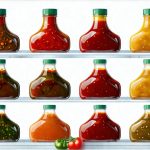The act of cooking is often framed as a practical necessity – fueling our bodies, providing sustenance. Yet, beneath the surface of chopping vegetables and stirring sauces lies a profoundly emotional process. For many, the kitchen isn’t merely a room for food preparation; it’s a sanctuary, a space where anxieties can dissolve into mindful action, and stress transforms into creative expression. This article explores the intricate relationship between cooking and emotional regulation, focusing specifically on how the process of preparing food – rather than simply consuming it – can serve as a powerful tool for managing our internal states and fostering a sense of well-being within ourselves and even relating to our stomachs in a more compassionate way.
Cooking taps into fundamental human needs beyond basic survival. It connects us to heritage, tradition, and the comforting rhythms of daily life. The tactile experience of working with ingredients – the cool smoothness of dough, the vibrant colors of produce, the satisfying crunch of spices – can be deeply grounding. Furthermore, the act requires presence; it demands attention to detail and a focus that naturally pulls us away from ruminating thoughts and worries. This isn’t about achieving culinary perfection; it’s about finding solace in the process itself, using the kitchen as a laboratory for self-soothing and emotional processing. The stomach, often reacting visibly to stress, can find a different kind of calm when its caretaker is also actively working toward inner peace. Understanding emotional regulation is key to this process.
The Sensory Landscape of Calm: Cooking & Mindful Presence
Cooking inherently encourages mindfulness. Unlike many other tasks we perform on autopilot, cooking demands engagement with our senses. We must pay attention to textures, aromas, and the visual cues that tell us how food is transforming. This focused sensory experience can be incredibly effective in anchoring us in the present moment, reducing anxiety and fostering a sense of calm. – Consider the simple act of kneading dough: the rhythmic pressure, the gradual change in texture, the feeling of flour between your fingers. It’s almost meditative. – Or think about sautéing onions: the initial sharpness giving way to sweetness as they caramelize, the fragrant aroma filling the kitchen. These sensory experiences create a mini-retreat from the demands of daily life. Learning more about breath analysis can also help understand your body’s signals during these moments.
The mindful aspect extends beyond individual senses. Cooking requires us to anticipate future events – how flavors will combine, how long something needs to bake, what textures we are aiming for. This anticipatory process can be constructive, shifting our focus away from past regrets or future anxieties and toward a manageable, creative task with a tangible outcome. It’s about intentionality—consciously choosing ingredients, techniques, and flavors that nurture not only the body but also the emotional state. This intentionality translates to a more positive relationship with food and our bodies; we are actively choosing nourishment and care. Those looking for ways to improve their digestion may find blended meals helpful, too.
Importantly, this isn’t about striving for perfection or following recipes rigidly. Embracing imperfection – a slightly burnt cookie, an unevenly chopped vegetable – can actually enhance the mindful experience. It reminds us that cooking is a process of learning and adaptation, mirroring life itself. The stomach often reacts to our self-criticism; by accepting imperfections in the kitchen, we model acceptance for ourselves, potentially lessening stress-induced digestive issues.
Reclaiming Control Through Culinary Agency
One significant aspect of emotional regulation through cooking lies in the sense of control it provides. When life feels chaotic and overwhelming, taking charge in the kitchen can be incredibly empowering. We have agency over ingredients, methods, and the final outcome. This is particularly valuable for individuals who experience anxiety or feelings of helplessness. – Cooking allows us to create something tangible from raw materials, a visible manifestation of our efforts. – It provides structure and predictability within a defined space. Establishing a daily routine can also aid in regaining control.
This sense of control isn’t about domination; it’s about reclaiming ownership over our environment and experiences. It’s the difference between passively reacting to stress and actively shaping a positive experience. Even something as simple as choosing to cook at home instead of ordering takeout can be an act of self-care, asserting control over what we consume and how we spend our time. This directly impacts the stomach’s environment by allowing for more conscious food choices, potentially reducing bloating or discomfort caused by processed foods.
The Comfort Food Paradox: Beyond Nostalgia
“Comfort food” often gets a bad rap, associated with unhealthy indulgence and emotional eating. However, cooking comfort food—even in moderation—can be emotionally regulating if approached mindfully. It’s less about the specific dish and more about the emotional connection it evokes. – A childhood recipe can transport us back to cherished memories, fostering feelings of safety and security. – The act of recreating a family favorite can strengthen our sense of belonging and continuity.
The key is to avoid using comfort food as a form of avoidance or suppression. Instead, we should consciously savor the experience, appreciating the flavors and memories associated with the dish. If emotional eating is a concern, focusing on preparing the comfort food – engaging in the mindful process described earlier – can be more beneficial than simply consuming it rapidly without awareness. The stomach doesn’t always crave unhealthy foods; it often craves the feeling of being cared for, and cooking can provide that care. Considering cooking methods is important too.
Connecting to Others Through Shared Nourishment
Cooking is rarely a solitary activity. Often, we cook for others—family, friends, loved ones. This act of preparing food for someone else extends the emotional benefits beyond ourselves. It’s an expression of love, care, and connection. – Sharing a meal creates opportunities for bonding and intimacy. – The act of nourishing another person can be deeply fulfilling.
The social aspect of cooking further enhances its regulatory effect. Engaging in conversation while preparing food or enjoying a meal together provides social support and reduces feelings of isolation. Even if you’re cooking alone, imagining the person you’re preparing the food for – visualizing their enjoyment – can foster positive emotions. This extends to even taking care of your own stomach—preparing a nourishing meal for yourself is an act of self-love and kindness that fosters internal connection and well-being.
The Ritualistic Aspect: Creating Sanctuary in the Kitchen
The kitchen, by its very nature, lends itself to ritual. From washing vegetables to setting the table, these seemingly mundane actions can become grounding practices when performed with intention. Rituals provide a sense of structure and predictability, reducing anxiety and fostering a feeling of calm. They also create a dedicated space for self-care and emotional processing. – Lighting a candle while cooking. – Playing calming music in the background. – Taking a few deep breaths before starting to chop vegetables.
These small rituals transform the kitchen into more than just a place to prepare food; they turn it into a sanctuary—a haven from the stresses of daily life. The repetition inherent in many culinary tasks – stirring, chopping, kneading – can be incredibly soothing, allowing us to enter a state of flow and lose track of time. This sense of flow is closely linked to emotional regulation, as it promotes focus, creativity, and a feeling of accomplishment. It’s about creating a deliberate pause in the day—a space for mindful engagement and self-nurturing. The stomach often responds positively to these routines; predictable mealtimes and calming preparation rituals can aid digestion and reduce stress-related gut issues. Understanding how bathroom disruption relates to emotional state is also important.
The creation of culinary traditions – family recipes, holiday meals – further strengthens this sense of sanctuary. These traditions connect us to our past, provide a sense of belonging, and create lasting memories. They offer a comforting continuity in a world that is constantly changing. It’s about building a legacy—not just of delicious food but also of emotional connection and shared experience. This intergenerational aspect makes cooking particularly powerful as an emotional regulator; it connects us to something larger than ourselves.


















